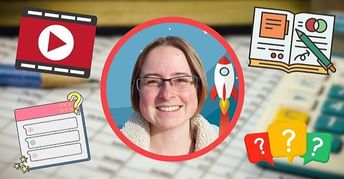🎵 Showcase your kid’s musical talent and win up to $1,000 in prize value!Enter Now
10
($5 value)

Constructing Tables in Math and Science: Analyze and Present Experimental Data
Ages 13-18
Self-Paced Class
1 pre-recorded lesson
1 week of teacher support
Choose your start date
1 year of access to the content
Enroll Now, Start Anytime
Go at your own pace
Your learner can start learning when they want and progress at the speed that works best for them.Start when you want.
Learn at your own pace
Access course material for a full year.
Get hands-on support from teacher.
Overview

Self-Paced Class
Asynchronous learning — no live meetings
1 pre-recorded lesson

1 week
of teacher support
1 year access
to the content
Homework
1-2 hours per week. Learners are given a five-page printable workbook, including a summary of key ideas, worked example, and practice exercises. Learners may submit their workbook answers and / or a table of their own experimental data for feedback.
Assignments
Learners will complete a self-marking multiple-choice quiz reviewing the key ideas from this class and applying them to real-life experiments. This quiz provides a score and detailed breakdown per question upon completion.Class Experience

US Grade 8 - 11

Beginner Level
This class is intended to teach aspiring young scientists and data analysts how to present experimental data in scientific tables - an essential skill for middle or high school classes on graphing skills, data analysis, or experimental science. Learners will watch a video (27 mins), which covers: - A brief review of scientific variables (independent, dependent, and control variables). - How to structure a scientific data table. - Important conventions, e.g. where to write units, levels of accuracy in data, etc. - Identifying anomalies in data, and how to deal with anomalous results. - How to calculate the mean (average) and present it in a data table. Throughout the video tutorial, students are prompted to practice, using worked examples from real-life experiments to spot mistakes and construct tables correctly. To accompany this, they will also receive detailed notes, complete a worksheet (answer sheet also provided), and do a summary quiz. In total, the learning time is anticipated to be around 1.5 hours. My teaching style is very structured and methodical, with everything broken down step-by-step with multiple examples to help learners follow along. This class is short and focused, to maximise learning within a bite-sized timeframe. As this is a self-paced class, please be aware that there is no face-to-face interaction. However, learners will instead receive automated assessment in the quiz and send me a picture of their completed worksheet for personal feedback.
Learning Goals

Draw data tables correctly according to scientific convention.
State where to position the independent variable, dependent variable, and units in a data table.Syllabus

Curriculum
Follows Teacher-Created Curriculum
Standards
Aligned with Next Generation Science Standards (NGSS)1 Lesson
over 1 WeekLesson 1:
Scientific Data Tables
This class introduces scientific data tables, including many examples from real-life experiments. We will learn how to present data in a table (according to scientific convention), calculate the mean (average), and identify anomalies. After watching the video (27 mins) and completing a quiz, you will then put this into practice with the detailed step-by-step worksheet and / or your own experimental data. 1 assignment
Other Details

Pre-Requisites
Students should ideally have an understanding of scientific variables (independent / dependent / control). These are briefly reviewed at the start of this class, but if you would like a more thorough introduction please see my other class.

Supply List
A five-page PDF (combining summary notes and worksheet questions) is provided, which learners can print out to complete.
Meet the teacher
Teacher expertise and credentials

3 Teaching Certificates
Non-US Teaching Certificate in Foreign Language
Non-US Teaching Certificate in English to Speakers of Other Languages
Non-US Teaching Certificate in Science

2 Degrees
Master’s Degree in Chemistry from University of Southampton
Bachelor’s Degree in Science from University of Cambridge
I am a qualified science teacher from the UK (PGCE + QTS) and have taught both maths and science to students in the UK and internationally - including leading student research programs and data analysis classes. Reviews
Are you planning to use state funding, such as an Education Savings Account (ESA), Micro-grant or scholarship to help pay for your learner’s education?

